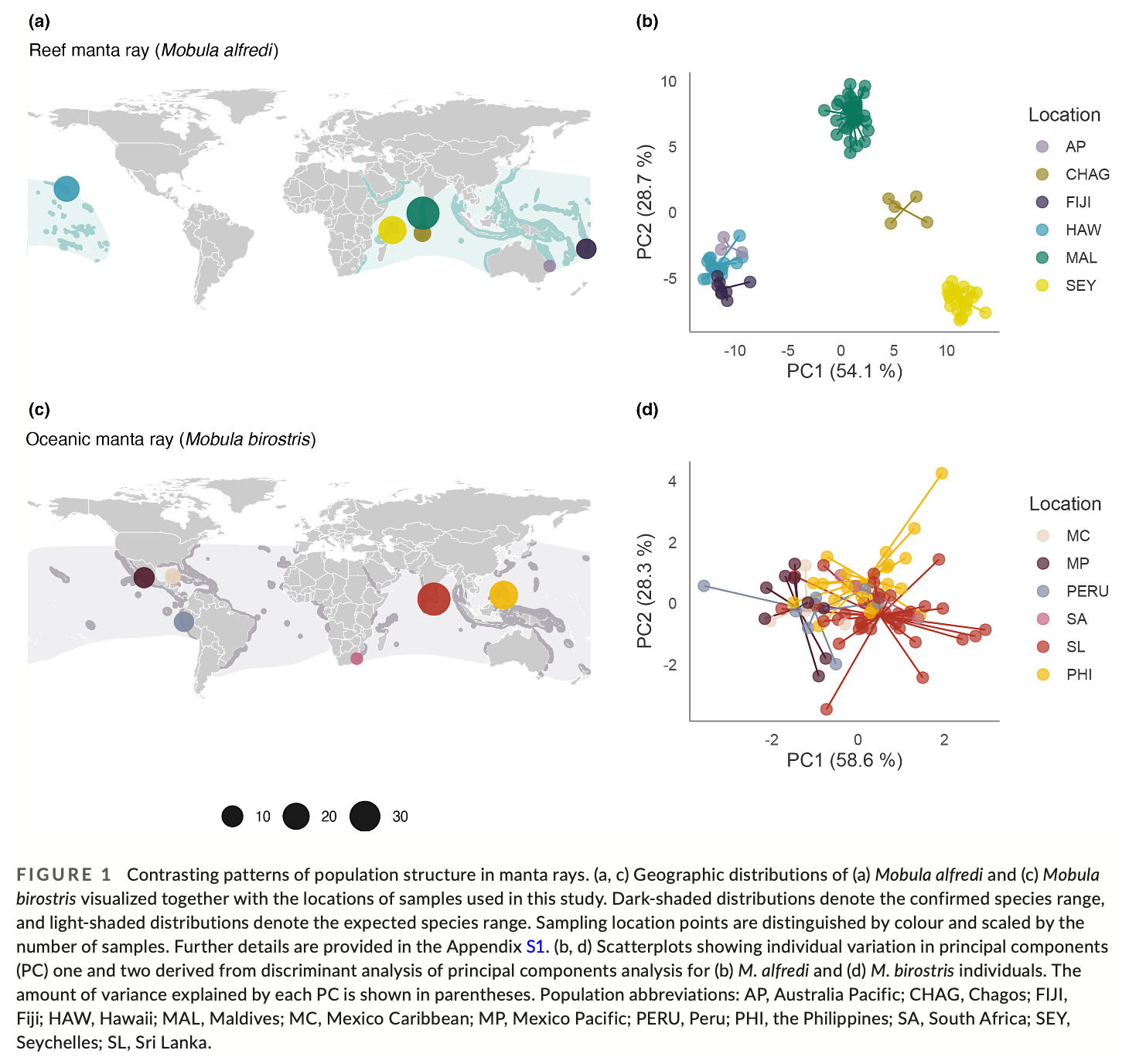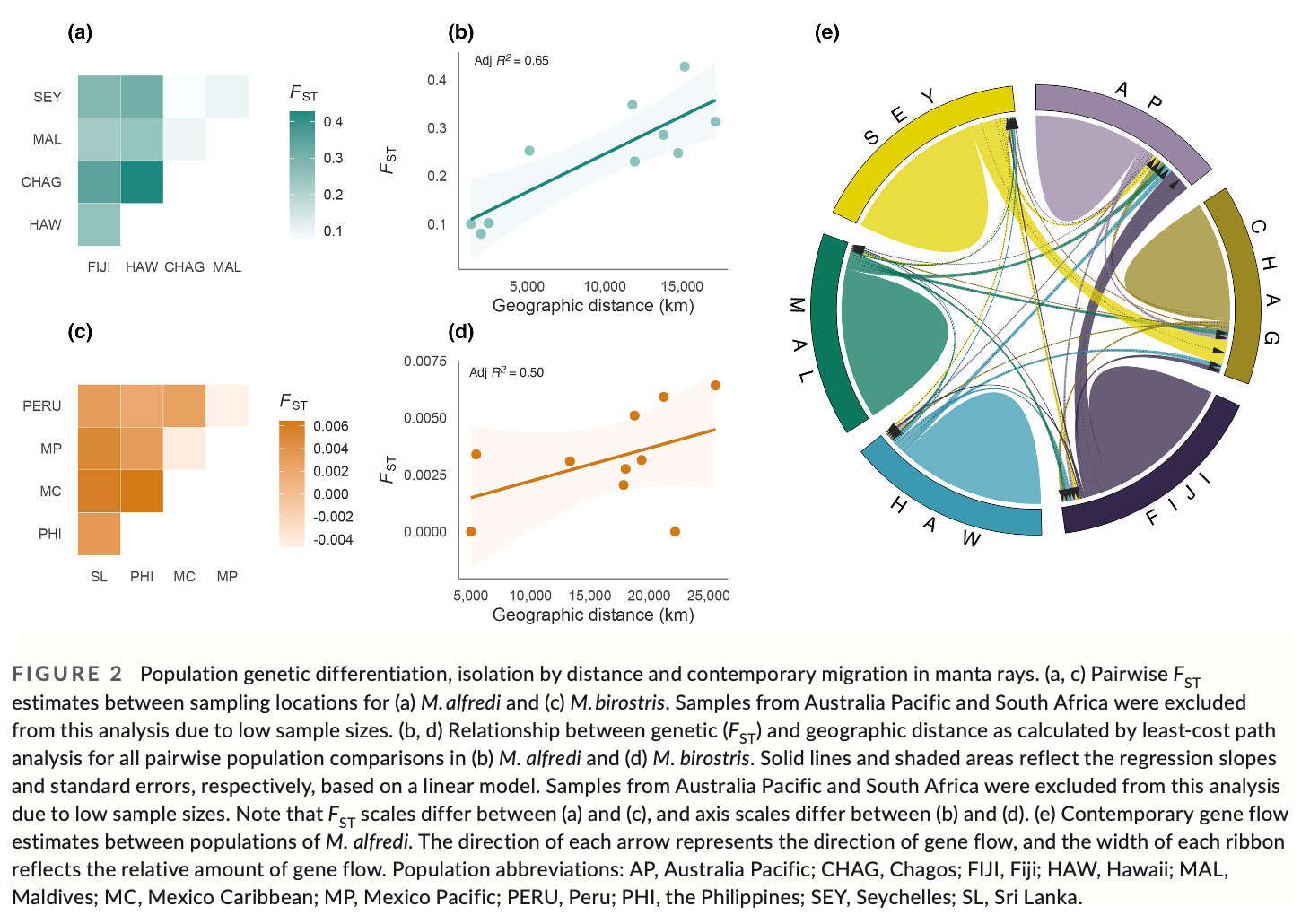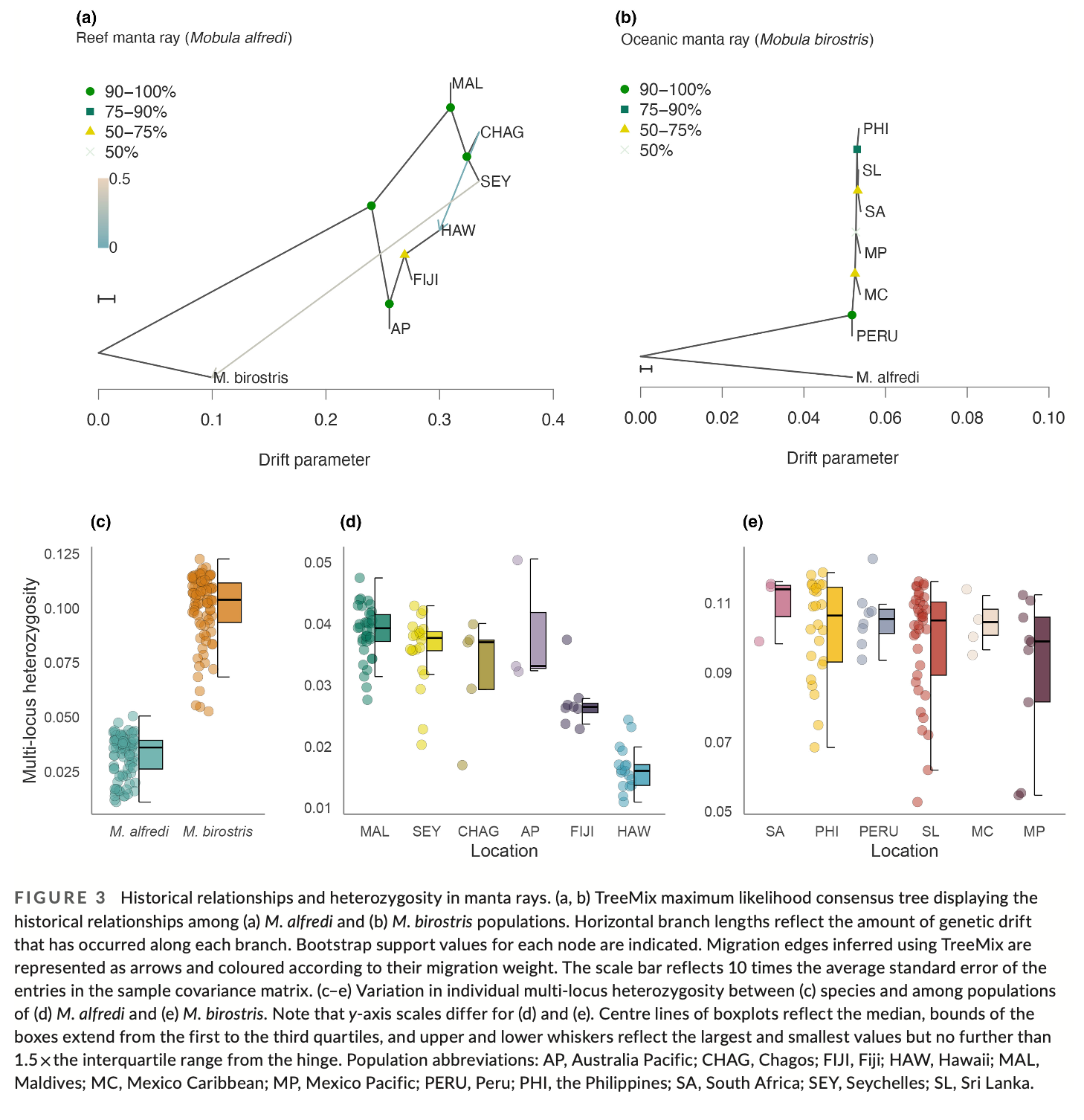Comparative population genomics of manta rays has global implications for management
November 2023
Emily Humble, Jane Hosegood, Gary Carvalho, Mark de Bruyn, Simon Creer, Guy M. W. Stevens, Amelia Armstrong, Ramon Bonfil, Mark Deakos, Daniel Fernando, Niv Froman, Lauren R. Peel, Stephen Pollett, Alessandro Ponzo, Joshua D. Stewart, Sabine Wintner & Rob Ogden
Keywords: Conservation Genomics • Fisheries Management • Genetic Diversity • Population Structure • ddRAD



Summary: Understanding the genetic diversity and connectivity of marine megafauna is crucial for conservation. Despite challenges posed by their elusive nature and vast distributions, such knowledge is essential for effective management. This study focuses on manta rays, comparing the genetic differentiation and diversity of oceanic manta rays and reef manta rays. Results show higher heterozygosity in oceanic manta rays and greater global connectivity, suggesting the influence of contemporary and historical factors. The findings emphasise the potential impact of fisheries on population dynamics, urging international conservation efforts for marine species.
Abstract
“Understanding population connectivity and genetic diversity is of fundamental importance to conservation. However, in globally threatened marine megafauna, challenges remain due to their elusive nature and wide-ranging distributions. As overexploitation continues to threaten biodiversity across the globe, such knowledge gaps compromise both the suitability and effectiveness of management actions. Here, we use a comparative framework to investigate genetic differentiation and diversity of manta rays, one of the most iconic yet vulnerable groups of elasmobranchs on the planet. Despite their recent divergence, we show how oceanic manta rays (Mobula birostris) display significantly higher heterozygosity than reef manta rays (Mobula alfredi) and that M. birostris populations display higher connectivity worldwide. Through inferring modes of colonization, we reveal how both contemporary and historical forces have likely influenced these patterns, with important implications for population management. Our findings highlight the potential for fisheries to disrupt population dynamics at both local and global scales and therefore have direct relevance for international conservation of marine species.”
Infographics
Author Affiliations
Royal (Dick) School of Veterinary Studies and the Roslin Institute, University of Edinburgh
The Manta Trust
Molecular Ecology and Evolution Group, Bangor University
Australian Research Centre for Human Evolution, Griffith University
School of Biomedical Sciences, The University of Queensland
Océanos Vivientes AC
Consejo Nacional de Humanidades Ciencia y Tecnología (CONAHCyT)
El Colegio de la Frontera Sur, Unidad Chetumal
Hawai'i Association for Marine Education and Research
Blue Resources Trust
Save Our Seas Foundation
School of Biological Sciences, Oceans Institute and Oceans Graduate School, The University of Western Australia
Large Marine Vertebrates Research Institute Philippines
Ocean Ecology Lab, Marine Mammal Institute, Department of Fisheries, Wildlife & Conservation Sciences, Oregon State University
KwaZulu-Natal Sharks Board
School of Life Sciences, University of KwaZulu-Natal
Funded by
Natural Environment Research Council
Save Our Seas Foundation
The People's Trust for Endangered Species
Marine Conservation Action Fund by New England Aquarium



